There are two more AE types listed in RIC and Sear for Julian, but they are rarely seen.
• AE4 VIRT EXERCIT ROMANOR, RIC Rome 327 p. 280. 14-15 mm "R" (Their example, plate 11, is terrible with most of the legend missing. It must be very rare. acsearch has none.)
• AE3 GLORIA ROMANORVM, a type of Vetranio which continued after his retirement for Constantius II and Julian. (It must be very rare. acsearch has none.) RIC VIII Siscia 387-9, page 378, with Cs II.
That completes the list of AE types. You may quit here. However, for more examples and discussion, continue below.
Go to the main Table of Contents page for this educational site.
Julian's Beard. The most historical type of Julian II is his "bull" type with a portrait with a long beard from Antioch. The reason is in his own extant writings.
Julian became sole emperor upon the death of Constantius II. As Augustus he grew a long beard in imitation of the ancient Greek philosophers, which distinguishes his coin portraits from those of his immediate predecessors (Constantine and sons) who were all depicted as clean shaven. There are extant writings of Julian and in them he complained about the largely-Christian populace of Antioch disparaging his beard. He wrote an entire satire about his beard that he called Misopogon (“Beard-hater”).
"For criticising myself I have countless reasons, and first I will begin with my face. For though nature did not make this any too handsome or well-favoured or give it the bloom of youth, I myself out of sheer perversity and ill-temper have added to it this long beard of mine, to punish it, as it would seem, for this very crime of not being handsome by nature."
(http://www.attalus.org/translate/misopogon.html )
He goes on to contrast his bearded face with the clean shaven Antiochenes and sarcastically pretends to understand the ridicule of the Christians by saying;
"For I myself furnish you with an excuse for it by wearing my chin as goats do, when I might, I suppose, make it smooth and bare as handsome youths wear theirs, and all women, who are endowed by nature with loveliness. But you, since even in your old age you emulate your own sons and daughters by your soft and delicate way of living, or perhaps by your effeminate dispositions, carefully make your chins smooth, and your manhood you barely reveal and slightly indicate by your foreheads, not by your jaws as I do."
Bull type (skip down to the VOT X MVLT XX type)
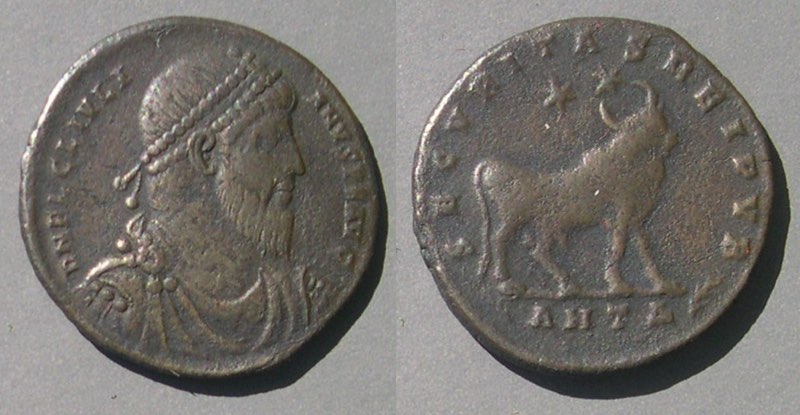 AE1. Bull.
AE1. Bull.
This example: 27 mm.
ANTΔ<palm>
Antioch mint
RIC Antioch 216
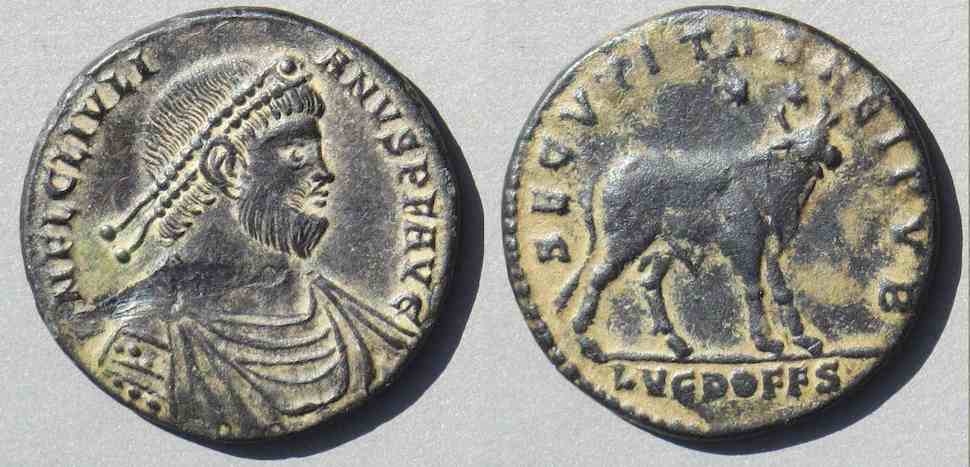 AE1. Bull.
AE1. Bull.
This example: 26 mm. 9.08 grams.
LVGDOFFS
Lyons - Lugdunum mint
RIC Lyons 236 "Spring 360 - 26 June 363"

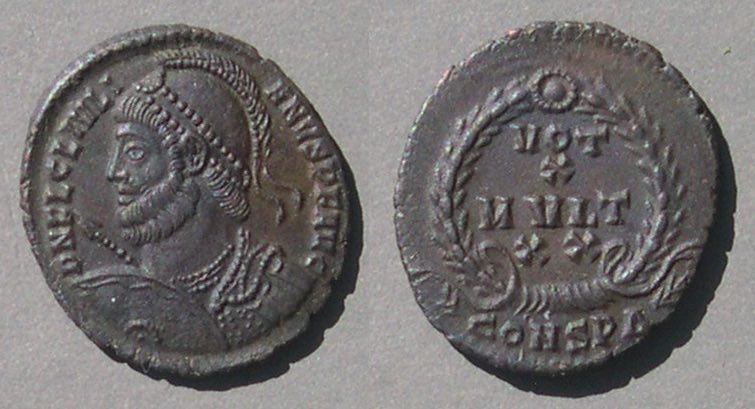
 AE3. SPES REPVBLICE
AE3. SPES REPVBLICE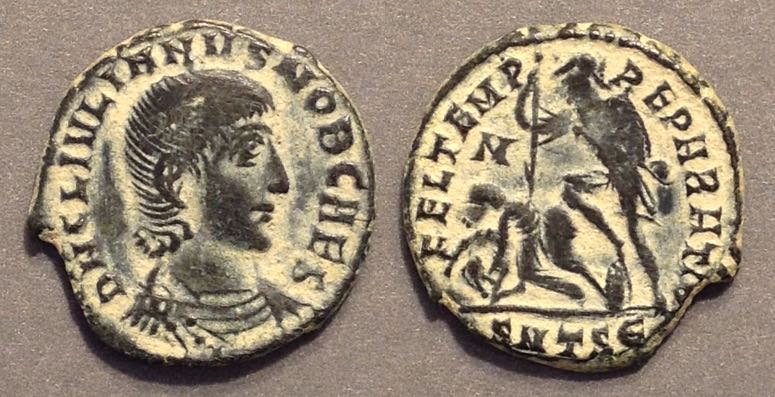 AE3-4. FEL TEMP REPARATIO, solider-spearing-fallen-horseman.
AE3-4. FEL TEMP REPARATIO, solider-spearing-fallen-horseman. AE1. Bull.
AE1. Bull. AE1. Bull.
AE1. Bull.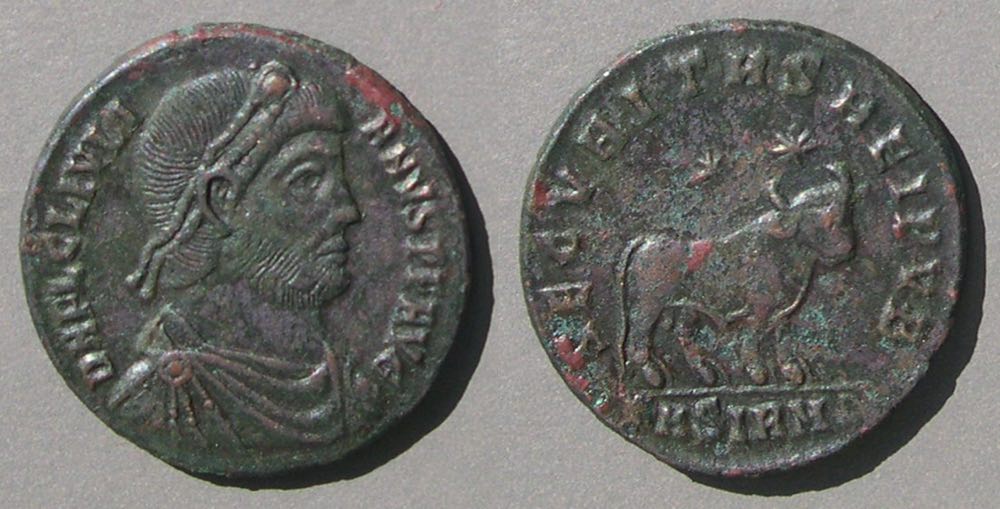 AE1. Bull.
AE1. Bull.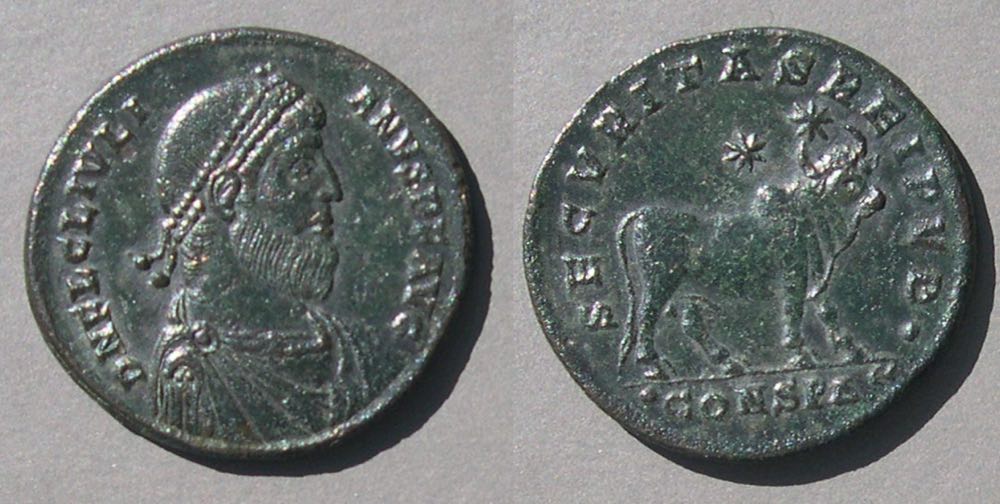
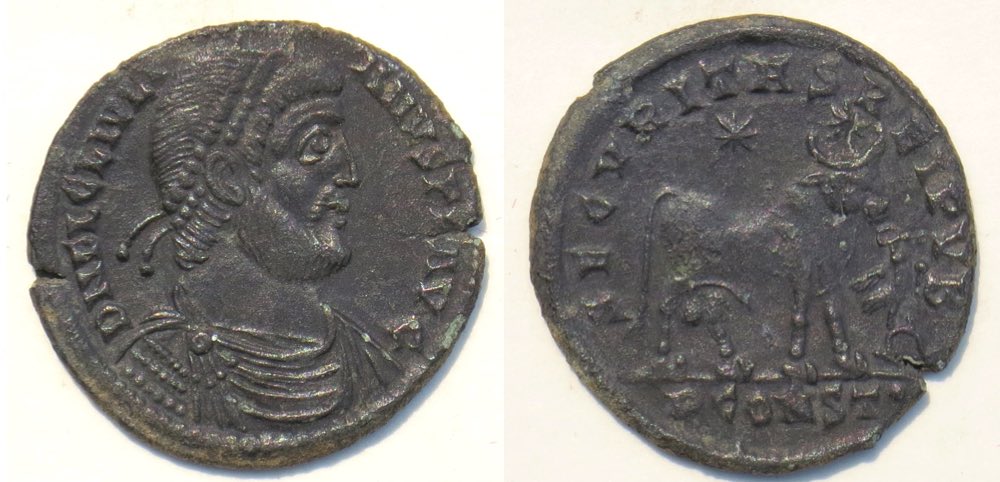 AE1. Bull.
AE1. Bull.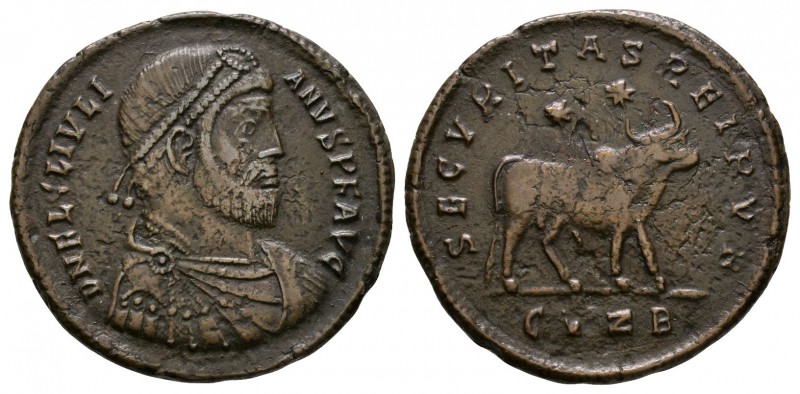 AE1. Bull.
AE1. Bull.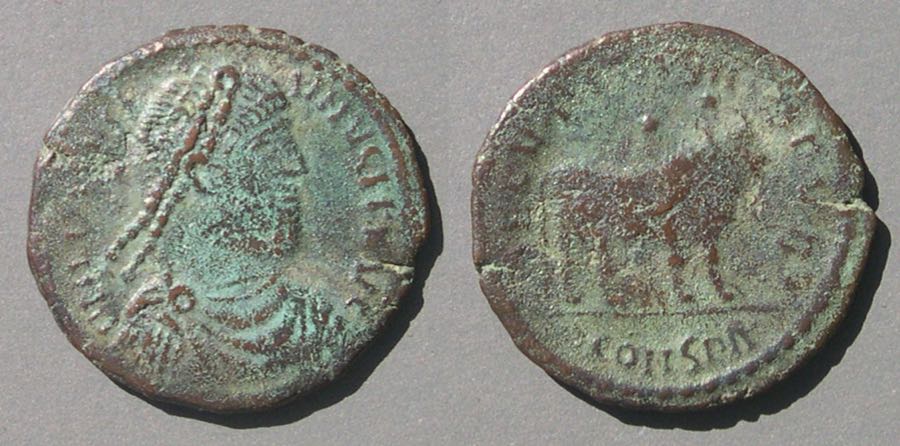 Ancient imitation of the AE1 bull type.
Ancient imitation of the AE1 bull type.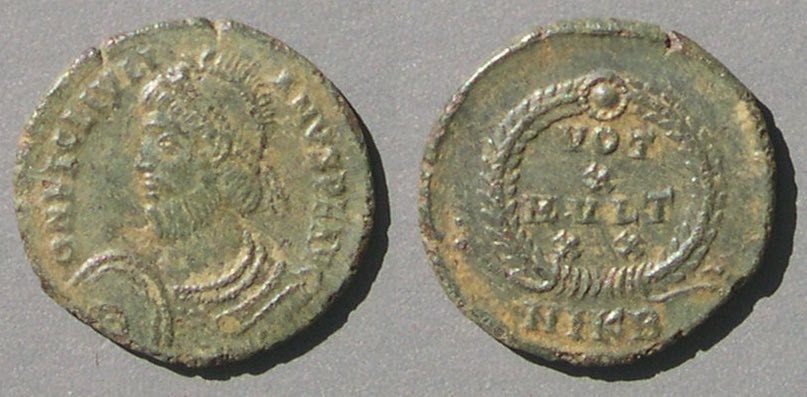 AE3. VOT/X/MVLT/XX in wreath
AE3. VOT/X/MVLT/XX in wreath
 AE3. VOT/X/MVLT/XX in wreath
AE3. VOT/X/MVLT/XX in wreath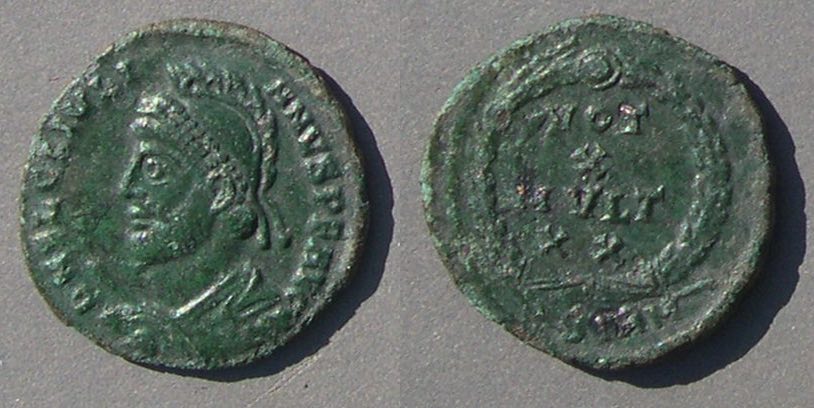 AE3. VOT/X/MVLT/XX in wreath >
AE3. VOT/X/MVLT/XX in wreath > AE3-4. FEL TEMP REPARATIO
AE3-4. FEL TEMP REPARATIO FEL TEMP REPARATIO ancient imitation.
FEL TEMP REPARATIO ancient imitation.